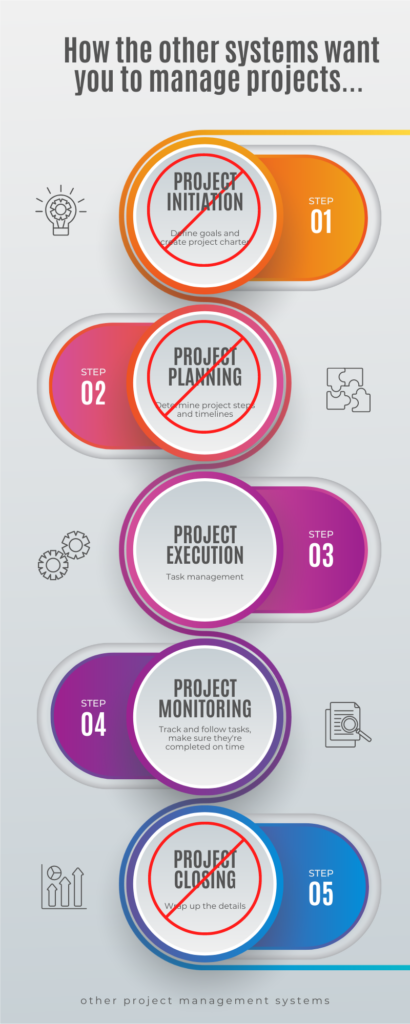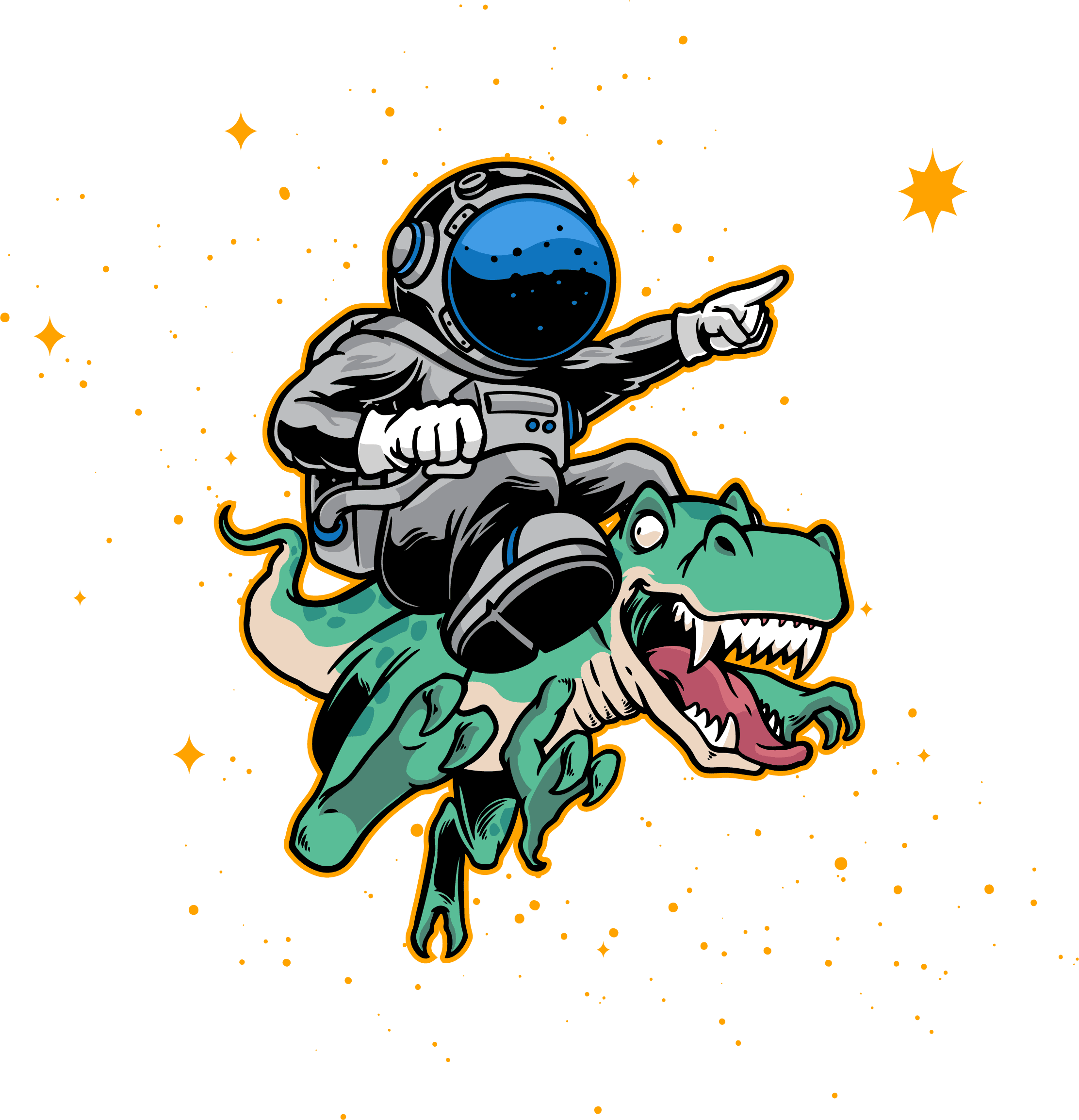Estimated reading time: 7 minutes
Table of contents
- Our brains are not all made the same; and with good reason
- Project Management promotes success when done… in the right order.
- Straight to “doing” creates misalignment & “shiny object syndrome”
- Leantime makes room for Project Inception and strategy development
- Design Thinking, Agile, Lean Project Management
Leantime started as an attempt to solve our own problem. Marcel owned a small digital web agency when we met; he was building MVPs for startups and I was working on my own health tech startup at the time. Eric Ries’ Lean startup had gotten big and, at the time, there was no where you could track both your lean canvas and the work at the same time.
Sticky notes everywhere and a notebook to track to-dos… I could never find anything.
As our careers shifted and we made transitions deeper into Product management (for myself) and him into Program management, we started to notice other challenges coming up.
Things like:
- “All in one” work solutions skip 4 main steps of project management by pushing people straight to task management
- Starting at execution (tasks) separates strategy & planning from the actual work. Alienating the team from the “why” of the project.
- Systems are feature overloaded; taking hours to set up and to understand.
- People who need project management miss out of the benefits because systems aren’t made for them
Our brains are not all made the same; and with good reason
Marcel is both an engineer and a technical program manager. He’s worked at large companies, small, startups and owned his own. His brain gets project management made for the software development lifecycle (SDLC).
Now, if you ask Marcel, teasingly, he will tell you that he doesn’t understand how my brain works. I’m not an engineer – even though I’ve since grown to be technical and more than capable with the SDLC compared to when we first started working together.
My career started as a nurse in the emergency room. I was used to evaluating unclear data points (symptoms) and mapping them out to a problem to solve.
For me, this process starts broad and compiles into a list of possible diagnoses that we then test, treat, test again if needed. So while his brain was used to seeing task by task, my brain needed to see big picture and work my way in. Project management systems simply don’t start this way — they are intended to help you move task by task.
But if I’m moving task by task, how do I ever move beyond asking myself, “Where do I start?”
The differences in how our brains work is just an example of what makes diversity so important and what makes a great team. We can see, achieve, and think in ways we may not have before. For us, this means we see project management from both sides.
Project Management promotes success when done… in the right order.
The purpose of project management is to increase the success and outcome of anything we want to accomplish; whether at business, life, with peer groups, at school.
We all intuitively use forms of project management all the time. We make lists to go to the grocery store; make to do lists when we have something we need to do. We plan weddings and family events. We set a goal and we make spreadsheets to map out how to get there.
But we don’t all consider ourselves project managers and that’s, in part, because project management is an innate part of being human and in trying to reach a goal. So if you’re not a project manager (career) and the people who identify as project managers are frequently in very specific fields (think tech, construction, manufacturing…), where are the systems built for those of us that still manage work and projects in our jobs but simply aren’t… project managers?
As we evaluated what a system built for me and the ‘never-wanted-to-manage-projects’ project manager could look like, we looked at everything. Motivational psychology, neuroscience, user experience & design, traditional project management concepts (and more); and then we looked at the systems out in the market.
Project management is a multi-step process: Project Initiation, Project Planning, Project Execution, Project Monitoring, Project Closing.
What we found: Most project management systems focus on step 3 and 4: Project Execution and Project Monitoring.

Straight to “doing” creates misalignment & “shiny object syndrome”
Project management systems assume that you’ve done the pre-project work and then they lean on our natural instincts of get sh*t done. These “all in one” solutions give you a small piece of project management but project management isn’t just a “what you do,”; it’s a why, how, and when skill too.
Good project management skills help solve for unclear strategy, inconsistencies, missteps, and promote timed delivery.
It can be hard to start with doing and get reliable, predictable, and cohesive results.
How do you decide what to work on first?
What guides your choices?
What are you working towards?
Is there value to this goal?
How much will it cost?
What’s the ROI?
What tasks should we do first?
Is this task worth doing at all?
Does this project help get us where we want to be in a year?
Now add in another person. Or another team. Starting with doing can become a free for all.
In our case, that means Marcel prioritizes what he wants, I pick what I want and we cross our fingers and hope we meet in the middle. You will, even with good project management, inevitably make assumptions about the work.
Or worse…
“Shiny Object Syndrome”
The term shiny object syndrome is often used when people mistake something small and focused and fixate on it to the extent that they lose the big picture.
– Wikipedia
Chasing things that sound like a good thing can quickly become the death of the good thing that you originally set out working towards. They are distractions to the real goal.
Leantime makes room for Project Inception and strategy development
Projects start because you have something you want to accomplish
Whether you’re the type to get distracted or the type to get overwhelmed by all the potential outcomes, increasing a project’s success starts at the start of the project. Starting with the north star, the why, the strategy, the how we get there.
You need to know why you’re building before you build. It’s also important to make it clear to the team why they are building what they are building. It allows them to have the same north star experience and take ownership of the work.
And now with so much remote work, we make decisions based on documents in far away folders, away from the work, and in zoom calls.
Enter frameworks and Leantime feature development.
Design Thinking, Agile, Lean Project Management
We live in a world of separation and specialization. Concepts are black and white with little gray.
You’re all agile or all waterfall. Healthcare, you’re all Lean six sigma. The reality, though, is that the best solutions are a blend of the best of things and are done with balance in mind.
Enter project management blasphemy here: things are not one size fits all with people or with companies.
We are in the pendulum swing of balance: Waterfall was one side, agile the either and here we are; looking for the center.
For project management systems, though, “one size doesn’t fit all” leads to feature and customization overload. Users ask for a feature because it’s “how they want to do it” and companies say OK! to the tune of a GAAP loss of 288.3 million dollars this year (2022) (looking at you, Asana).
Project management, being a skill, also means you know when to say no and are both decisive and protective of your north star. It involves ruthless prioritization. Features within project management need to be blended in with the best practices for the best outcomes.
The more complex project set up becomes, the more overwhelming it becomes, the easier it becomes to skip steps.
Leantime combines Lean startup & lean manufacturing concepts (path of least resistance, decreasing cognitive loads), design thinking (staged strategic approaches) and the benefits of agile (iterative processes).
While we look at every feature request with genuine consideration, these three concepts are ingrained to our foundation.
Because we want to be the system for the big picture, for the non-project manager, in a way that makes project management intuitive again. SDLC or not.
Other articles you may be interested in:



